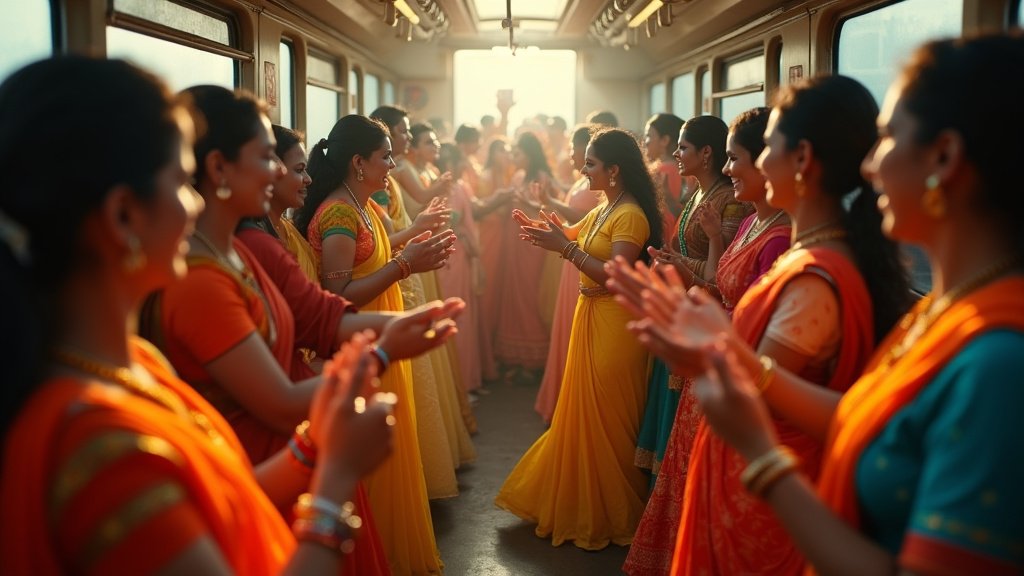Dust off your cartridge collection and blow into that old NES controller—retro gaming isn’t just nostalgia, it’s a bona fide cultural phenomenon. In 2025, classic consoles and pixel-perfect experiences are enjoying a second life, driven by collectors hunting mint-condition cartridges, indie developers crafting faithful homages, and social-media communities celebrating the era when gaming felt tactile and unfiltered. But beyond the sentimental pull lies a thriving ecosystem that spans hardware reissues, competitive scenes, digital emulation, and even academic study. Here’s why, sixteen-bit years after the Super Nintendo debuted, retro gaming matters now more than ever.
1. The Psychology of Nostalgia and Play
At its core, retro gaming taps into powerful emotional currents. Psychologists define nostalgia as “a bittersweet longing for one’s past”: it comforts us during uncertain times by reconnecting us to simpler, formative experiences. For Millennials—now in their 30s and 40s—an afternoon spent on Super Mario World evokes childhood weekends, after-school cartoons, and the thrill of discovery when that secret switch unlocked Yoshi’s Island. Gen Z, who grew up with smartphones and online multiplayer, views pixel art and chiptune soundtracks as novel and artisanal, an analog antidote to hyper-realistic graphics and live-service fatigue.
This emotional resonance translates into sustained engagement. Researchers at the University of Toronto found that playing classic games can boost mood and cognitive function, as familiar mechanics reduce anxiety and foster problem-solving in a low-stakes environment. Retro sessions become social rituals—friends gather around a CRT TV for co-op run-throughs of Contra, or families introduce kids to the “origins” of motion-control in Mario Kart 64. Nostalgia isn’t passive longing; it’s active participation in a cultural lineage.
2. Hardware Reissues: Mini Consoles and Plug-n-Play
Recognizing this demand, major manufacturers have revived classic hardware in sleek, modern packages. The SNES Mini, launched in 2019, paved the way with 21 preloaded titles, HDMI output, and wireless controllers. Its successor, the Mega Drive Mini 2 (2024), doubled the library to 40 games and added a built-in save-state feature, allowing newcomers to tackle Shining Force without losing progress after a power cycle.
Smaller players have joined the fray. Analogue’s pocket-sized handhelds, which natively play original cartridges on FPGA-based hardware, fetch upward of $200 on release day. Retro-Bit’s “Plug & Play” joysticks cost under $50 and connect via USB to modern TVs and PC monitors, making Street Fighter II tournaments in your living room effortless. These reissues lower the barrier to entry—no more rummaging through basements for outdated cables—while preserving authentic gameplay timing and visuals.
3. The Indie Renaissance—New Games in Old Styles
Beyond hardware, a vibrant indie scene channels the aesthetics and design philosophies of the ’80s and ’90s. Developers harness Unity, Godot, and even original development kits to craft new adventures that look, sound, and feel like unexplored classics:
- “Voidrunner DX” blends the frenetic pace of Gradius with rogue-lite progression, its starship’s pulse-pounding synth soundtrack composed with authentic SID-chip emulation.
- “Castle of Echoes” reimagines Castlevania platforming with modern quality-of-life improvements—precise pixel hitboxes and expanded color palettes—while retaining the series’ gothic charm.
- “Neo Detective: Tokyo” channels point-and-click adventures on the Sega Saturn, complete with FMV sequences and a branching narrative that rewards multiple playthroughs.
These passion projects win plaudits at indie showcases like BitSummit and PAX, proving that retro design is not mere mimicry but a creative framework enabling experiments in minimalism, emergent gameplay, and community-driven content.
4. Competitive Scenes and Speedrunning Communities
For some gamers, retro isn’t just about replaying old favorites—it’s about mastery under pressure. Speedrunning communities have exploded across Twitch and YouTube, where luminaries like “Summoning Salt” and “TASBot” dissect frame-perfect routes through Super Metroid and The Legend of Zelda: A Link to the Past. Annual events like Games Done Quick channel millions of viewers and raise millions of dollars for charity, showcasing runs that defy logic: glitch skips that warp players across entire worlds, and precision tricks that require inhuman timing.
Casual tournaments also thrive. Barcades—arcade-style bars—host weekly “Retro Nights” where competitors duke it out in Street Fighter II, GoldenEye 007, and NBA Jam. Lovers of analog stick drift and four-button combos prize original hardware setups, complete with CRT displays for authentic scanline flicker. In these spaces, the retro aesthetic becomes a community ritual, fostering face-to-face competition rare in a predominantly online gaming era.
5. Digital Emulation and Preservation Efforts
While hardware reissues and indie titles flourish, digital emulation remains the backbone of retro accessibility. Open-source projects—RetroArch, Mesen, Dolphin—deliver near-perfect fidelity to PC, Mac, and mobile devices. Preservation advocates point to the imminent decay of original cartridges and disks; with limited manufacturing runs, many rare titles face extinction as battery-backed save chips die and physical media degrades.
Nonprofits like The Video Game History Foundation partner with museums and private collectors to archive source code, promotional materials, and developer interviews. Countries like France and Japan have formalized “cultural patrimony” status for classic games, funding digitization efforts to keep them playable for future generations. While legal gray areas persist around ROM distribution, licensed services—Nintendo Switch Online and Sony’s Playstation Plus Premium—offer curated libraries of classics, balancing copyright concerns with preservation needs.
6. Collectors, Market Dynamics, and Provenance
The retro boom has transformed cartridges and boxed sets into investment assets. A sealed copy of Super Mario Bros. sold for $2 million in 2021, and mint-condition rarities like Stadium Events can command five-figure sums. Grading services, akin to those for comic books or trading cards, certify condition and authenticity, sparking debates about “speculative bubbles” versus long-term cultural value.
Platforms like eBay, Yahoo! Auctions (Japan), and dedicated collector forums facilitate transactions, while blockchain-backed provenance tools are emerging to prevent fraud. High-net-worth enthusiasts display vintage consoles in climate-controlled “game rooms,” sometimes more elaborate than wine cellars, where shelves of boxed games serve as both décor and status symbols. This collector culture—once niche—now influences mainstream interest, with documentaries charting the high-stakes auctions and clandestine trades of gaming’s holy grails.
7. Academic and Creative Recognition
Retro gaming has transcended hobbyist circles to enter academic discourse. Universities offer courses on interactive media history, dissecting design trends from the Atari 2600’s sprite limitations to the SNES’s Mode 7 scaling effects. Game studies journals analyze how pixel art fosters player imagination and how early game mechanics influence modern usability. Museums mount exhibitions—like MoMA’s “Game Devs: The Art of Play”—that frame classics as design masterpieces.
Artists and musicians draw inspiration from retro aesthetics. Pixel-art exhibitions tour galleries, and chiptune festivals pack venues with DJs remixing 8-bit melodies into dancefloor-ready tracks. Independent creators publish zines dissecting level design or composer interviews, treating games as cultural texts deserving of critique and celebration.
8. Challenges and the Road Ahead
Despite its vibrancy, the retro renaissance faces headwinds. Hardware shortages—fueled by supply-chain disruptions and chip scarcity—periodically inflate prices for mini consoles and FPGA handhelds. Licensing disputes can pull beloved titles from digital storefronts, as seen when legal wrangles halted new emulation releases of certain Nintendo franchises. And as retro’s mainstream appeal grows, purists lament the “McRetro” trend—mass-market nostalgia products that prioritize profit over authenticity (think $10 cassette-looking Bluetooth speakers with 30 preloaded “80s hits”).
Yet the scene adapts. Community-run flash-cart projects enable homebrew development for original hardware, while open-source FPGA projects promise customizable retro platforms free from corporate gatekeeping. Festivals and online expos continue to evolve, showcasing hardware mods, fan translations of obscure Japanese titles, and collaborative speedrun marathons that unite global audiences.
Conclusion
In 2025, retro gaming is far more than a sentimental hobby—it’s a dynamic industry segment, a creative incubator, and a cultural touchstone bridging generations. Whether you’re a collector chasing graded box art, an indie developer crafting the next pixel-perfect adventure, or a newcomer discovering the visceral joy of 16-bit platforming, there’s never been a better time to embrace gaming’s past. As technology marches forward, the lessons and aesthetics of gaming’s formative decades hold enduring value—reminding us that play, at its heart, transcends graphics or budgets. It’s about shared experiences, joyful exploration, and the simple thrill of pressing “Start.”





